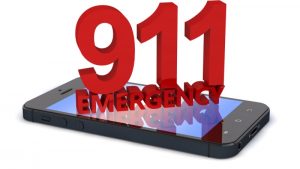Digital vaccine credentials and exposure notification apps can be used to safely reopen social and economic activities and allow for more rapid and broader contact tracing. However, an official from the Government Accountability Office (GAO) said the improper implementation of both technologies sparked concerns about privacy, effectiveness, interoperability, and equity that may limit their use and potential public health benefits.
In a bid to make filing taxes a little bit easier, the city of Philadelphia has launched a new cloud-based tax system.
Maryland’s COVID-19 vaccine call center, created in February of this year, has now helped scheduled more than 460,000 vaccination appointments and made more than 11 million outreach calls to Marylanders.
The State of New York released its Excelsior Pass Blueprint, which Governor Kathy Hochul described as “a national framework to aid in the development and implementation of digital health credentials.”
The Federal Communications Commission (FCC) is moving to prevent robocallers calling 9-1-1 call centers and proposed a rule to fulfill a requirement from a 2012 law to create a public Do-Not-Call list for Public Safety Access Points (PSAPs).
Now that the Federal government, via the Department of Labor (DoL), has signed up to put $2 billion of stimulus-related funding into shoring up beleaguered state unemployment insurance (UI) systems overpowered by the jobless claim surge due to coronavirus pandemic, Federal and state officials discussed how those efforts will roll out during a panel discussion at MeriTalk’s State Tech Vision virtual program on September 15.
The General Services Administration (GSA) has named Waldo Jaquith, a veteran technologist and former member of the Biden-Harris transition team, to be GSA Administrator Robin Carnahan’s senior advisor for state, local, tribal, and territorial government.
Crumbling bridges and leaky levees. Buckling roadways. Unsafe water pipes. Inadequate public transit. The list of U.S. infrastructure failings is both broad and deep. The United States is paying only about half of its necessary infrastructure bill, and the total investment gap has grown from $2.1 trillion over 10 years, to a current figure of nearly $2.59 trillion over 10 years, according to the American Society of Civil Engineers. As a result, local government leaders face staggering infrastructure requirements that local tax revenues cannot fulfill.
The city of Chicago announced that it has tripled the number of self-service payment kiosks across the city.
The City of Houston announced the launch of its new 311 platform that will enable citizens to more easily access city information and report non-emergency issues.












